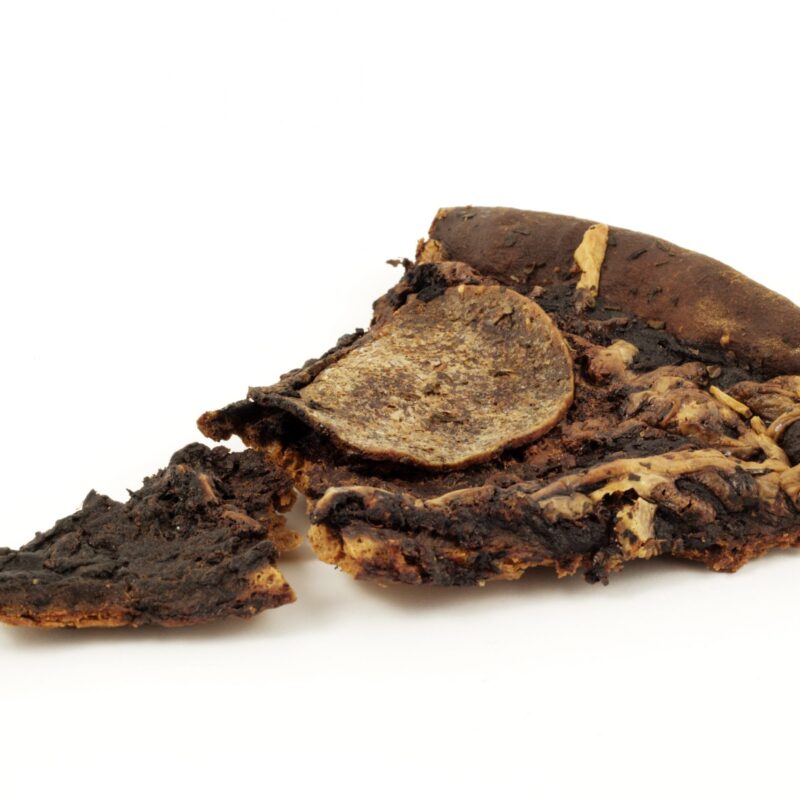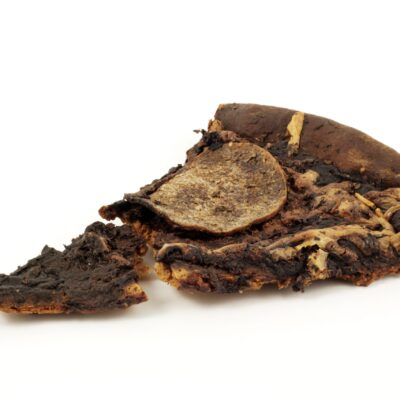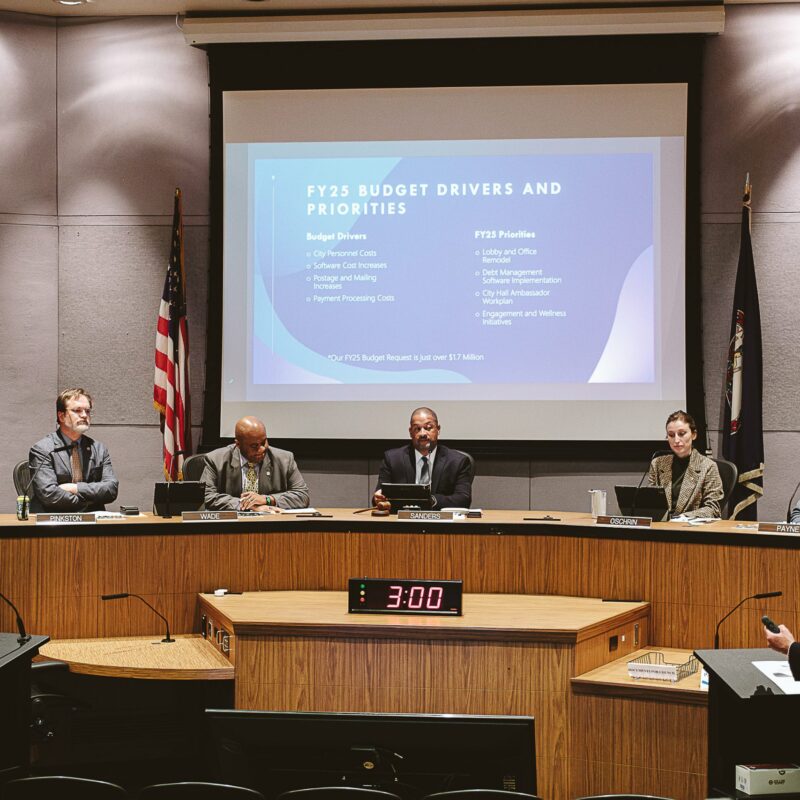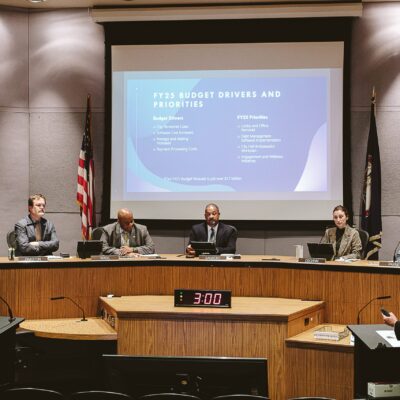|
JUMP TO: 10 ways to improve your health right now A real-life breast cancer story Five local guardians of wellness |
Connections that should be obvious, but aren’t: The words health, heal and whole all share a common root. When we’re healthy, we’re whole; the connections between body, mind and spirit are intact and vibrant. And when we’re connected to other people—those who heal us and those we help to heal—we’re healthier and our community is more whole.
Charlottesville’s a community that, on some levels, takes great care of itself. We love us some yoga, we’re crazy about organic veggies and we enthusiastically pursue wholesome pastimes from volunteering to ballroom dancing to reiki treatments. Not only that, we boast health care facilities that would put bigger cities to shame.
But that’s not the end of the story, as we hope to point out in this, our 2011 Health Annual. Our community—like every community—also encompasses illness, lack of medical coverage, and the ongoing hard work of caring for each other, whether that means the search for a high-tech cure or the compassion to help a stranger get in shape.
We’ve tried to find some of the more fascinating corners of the local health scene, and in the spirit of the new year, we also offer some advice on eating well, exercising and a few other healthful topics. Here’s to wholeness; here’s to healing. Now it’s up to you to make the connections.
Baby steps
10 things you can do to improve your odds
1. Eat some kale.
You probably don’t nosh green leafy veggies once a day, but if you did you’d lower your risk of cardiovascular disease by 11 percent. Plus, you’ll protect yourself from diabetes, bone disease, eye disease, and cancers of the stomach, breasts and skin. All this in a leaf of Red Russian!
2. Rid your home of bleach.
It’s a lung and eye irritant, and if you inadvertently mix it with any other cleaning product that contains ammonia, you’ll release chlorine gas into your house. Why risk it when hydrogen peroxide, vinegar, baking soda and lemon can substitute for almost any cleaning job?
3. Don’t drive in the wee hours.
A Swedish study found that 4am was the hour with the highest total risk of traffic accidents. And another source claims that someone driving at 3am Sunday is more than 100 times more likely to die than someone driving seven hours later, at 10am. What are you doing awake at that hour, anyway?
4. Don’t sing while exercising.
Not that it’s unhealthy to do so; the point is that if you can belt out “Help Me, Rhonda” during your workout, you’re probably not leaving it all on the field, so to speak. Experts recommend that you exercise at an intensity that allows you to speak in short sentences, but not to sing a song. This moderate pace keeps you fit while minimizing the risk of injury.
5. Sleep in the dark.
Sounds obvious, but if you sleep with a nightlight or other illumination in your bedroom, it’ll disrupt your melatonin levels. This hormone, produced by the pineal gland only in darkness, helps you sleep, keeps you from aging too quickly and acts as an antioxidant.
6. Do a headstand.
Yogis say that inverting your body regularly, especially in the “king of all asanas”—the headstand—carries a raft of benefits from improving blood flow to the brain, to making your breath smell better, to relieving asthma. That’s impressive, which is also how you’ll look when doing the pose!
7. Eat a sausage every morning.
Well, maybe not a sausage. But protein with breakfast is a great idea because it keeps your blood sugar from spiking too quickly—as it will if you start your day with a donut and coffee. How about oatmeal with nuts? Or a hard-boiled egg and whole wheat toast?
8. Protect your heart with a toothbrush.
Yes, it’s true. Good oral hygiene prevents gingivitis, which involves lots of nasty bacteria hanging out in your mouth, which triggers a chronic inflammation response in the rest of the body—which can contribute to heart disease and stroke. People, brushing your teeth definitely beats recovering from a heart attack.
9. Open a window.
Poor indoor air quality causes problems that range from the merely annoying (headaches, trouble concentrating) to the potentially fatal (cancer). Fresh air coming into a building, along with proper humidity levels, are major contributors to good indoor air quality.
10. Peace out.
Meditating helps your body handle stress better. One study found that coronary heart disease patients who learned Transcendental Meditation lowered their blood pressure and reduced insulin resistance. And who doesn’t want to feel calmer? Say it with us: Number nine…number nine…
Back to basics
Living through breast cancer means big changes
Sharon Bingler was diagnosed with breast cancer in 2008. She was 53 at the time.
“Within two weeks of the diagnosis, I had a bilateral mastectomy, I did about a month of healing and then started chemo,” she says.
|
"When I heard the word cancer, it put everything in perspective," says survivor Sharon Bingler. |
After the first treatment, Bingler began losing her hair and shaved it all off. “My biggest concern were my four grandchildren,” she says. But the kids reacted unexpectedly. “They shaved their heads, too.” In a picture she keeps in her wallet, Bingler is surrounded with happy and head-shaven kids. “It was a real journey; it was a life-changing journey.”
According to BreastCancer.org, in 2010, 2.5 million women in the U.S. are breast cancer survivors.
As one of them, Bingler tries to put a positive spin to everything she encounters, whether it is her husband getting laid off or the worry that cancer will come back. Physically and mentally, her life regimen has changed.
She now walks three times a week for 30 to 45 minutes (she ran the Women’s Four-Miler in September); she now works part-time at Martha Jefferson Hospital; she swims and watches her fat intake. “My weakness is coffee, but I don’t eat a lot of meat.…I eat a lot of vegetables and I drink lots and lots of water,” she says.
Yet, the biggest change in her life has been keeping the stress at bay.
“When I heard the word cancer, it put everything in perspective. I didn’t think about bills.…I didn’t think about what kind of car I was driving or what kind of house I had. None of that mattered. What mattered was that I got the treatments that were available to me and I was going to be alive to see my kids,” she says.
Although she doesn’t worry about marginal things anymore, when she feels stress edging in, she writes her thoughts in a journal. “I journaled from the very beginning all the way through my process, and it helped tremendously,” she says.
At 55, Bingler is now stronger then ever. She has embraced public speaking and she is a vocal advocate for cancer research. Discussing the disease with other women suffering has helped her break out of her shell, she says. “I was timid before, but I am not anymore,” she says proudly.
…And float downstream
Control your thoughts (and stress) with mindfulness practice
When people think of mind control, they think of mad scientists, tinfoil hats and laser beams. Few stop to wonder whether they can even control their own minds. But try to stop thinking for a moment. You’ll likely find an endless stream of thoughts flowing outside your control—and causing you stress. The UVA Mindfulness Center offers a mindfulness-based stress reduction course that can help you control that stream, and to reduce stress along with the many diseases it can cause.
|
We can learn to manage the adrenaline rush at the root of stress, says mindfulness instructor Sam Green. |
At a recent introductory course at a meditation studio on Ivy Road, Sam Green, a Ph.D. in Cell Biology who teaches at UVA’s medical school, explained that when humans are faced with a threat, the body responds with a jolt of adrenaline. The jolt is useful if, say, you’re being chased by a bear. But if the body goes into fight-or-flight mode because your boss is in a bad mood, or you find out the maid used the wrong laundry detergent, that extra jolt of energy gets translated into stress on the body. That’s where problems start. Chronic stress can cause or exacerbate digestive problems, heart disease, sleep problems, obesity and a host of other illnesses.
But you can control what happens to that adrenaline. The 10 people in the class lay back on yoga mats with eyes closed. Green led a series of mental exercises, encouraging the group to think about the sensation of the left ankle against the mat, then the other ankle, the knees, slowly upward, and so on.
The exercise asks that you sever the stream of thoughts being issued from the mind’s nether regions, whether they’re good or bad, and to focus instead on minute physical sensations—lying, stretching, breathing. After practice, what remains is a nonjudgmental, moment-to-moment awareness that can improve your physical health, focus and even relationships.
The UVA Mindfulness Center, part of the Department of Family Medicine, hosts an intensive mindfulness-based stress reduction class that runs eight weeks for $375. (The current class started on January 24.) Teachers ask that you conduct 45 minutes of homework per night. I know: And they say mindfulness practice prevents stress? Don’t worry—it’s only meditation. Visit www.uvamindfulnesscenter.org for up-to-date information.
Who’s looking out for you?
Five local guardians of wellness
Is it only doctors and nurses who are overseeing public health in this town? Definitely not. Here are five folks outside the traditional medical professions who are making a difference to other people’s health, from blood pressure to nutrition to happiness.
/RI_-IMG_7314.jpg) |
Eat your veggies
In an age when childhood obesity is getting attention from the likes of the First Lady, there are still a lot of mouths out there to feed—ideally with something other than fries. Locally, Peanut Butter and Jelly is an organization that’s bringing healthier stuff to low-income kids. Emily Wampler, its director, says there’s a message that comes with the meals: “It’s an opportunity to…talk to kids about how food has so much to do with their health.”
PB&J delivers nutrition in a few different ways. There are cooking classes for teenagers through the Boys & Girls Clubs; bins of healthy snacks distributed through school nurses; lunches in communities like Southwood and Blue Ridge Commons; and after-school workshops for parents and kids on cooking with fresh produce.
Community grows along with education, says Wampler: “Food is a really great connector.”
/Esposito.jpg) |
Four-mile fun run
“Women love to do things in groups,” says Joan Esposito. On that simple assumption, she’s made a wild success of the Women’s Four-Miler Training Program since she began running it in 1999. Every summer, the energetic 66-year-old Esposito, a.k.a. “Big Pink,” leads a volunteer army of 85 as they train 1,500 participants for the Women’s Four-Miler.
When they start the program, many of the runners aren’t even walkers. “The average age is 42,” says Esposito—“a woman who may be overweight and out of shape and may not have exercised for years.” Twelve pink-hued Saturdays later, that woman has changed, and Esposito loves to watch the transformation. “[Exercise] is the best medicine,” she says. “It’s free and keeps you young.”
/RI_-IMG_7008.jpg) |
Yoga en español
What’s Spanish for “downward dog”? Elisa Ferrante knows. She teaches yoga in Southwood trailer park, which has a largely Hispanic population. Part of the Guerrilla Yoga Project, the donation-based class started up last spring and attracts mostly “middle-aged ladies,” says Ferrante.
“Their health is not fantastic,” she says—the students have excess weight, high blood pressure, and “a lot of stress. So I try to do classes that are fairly simple…and try to relax them a little bit.”
Some women bring their kids, so Ferrante —by day, a biomedical engineer—brings crayons. “[The students] enjoy the way it makes them feel,” she says. “It’s a little bit of time away from everything else they have to do in the evenings.”
/RI_-IMG_7127.jpg) |
Help with homecoming
You don’t have to be wounded to get help from Virginia Wounded Warriors (VWW), stresses Ben Shaw. “If you’re a vet we can certainly help you,” he says—and that goes for families of veterans, too.
With three tours of Iraq under his belt, the former Marine infantryman is well-positioned to understand the unique troubles facing servicemembers when they come back home. “I was incomprehensibly difficult to be around” when he returned from duty in 2007, he says. These days, as a veteran peer specialist with VWW, he does everything from connecting folks to counselors at Region 10 to simply eating pizza with other vets.
“You forget what it’s like to be a civilian because you’re so trained to be a combatant,” he says. Wounded Warriors helps vets remember.
/RI_-IMG_5757.jpg) |
Minds that matter
Call it the therapy desert: There are a lot more women who need treatment for depression and other mental health problems but can’t get it because they lack insurance. Kerry Day says her agency aims to bridge the gap—and along the way, to break down stigmas around mental health treatment. Since it opened three years ago, 2,700 women have gotten help from The Women’s Initiative, which Day directs.
Individual counseling is, she says, “the core of our agency.” But the organization also hosts a postpartum depression support group, runs workshops for women in poor communities, and hooks needy clients up with United Way for low- or no-cost medication.
Why is this important? Simple. “If women maintain health and wellness, they become a real model of strength for children, loved ones, and the broader community,” Day says.
Beyond dieting
A surgery to remove the appetite
When the problem is extreme, so is the solution. For some patients, standard weight-loss regimens just don’t cut it, and that’s where gastric bypass surgery may come in. A patient’s stomach is bypassed and a small “pouch,” which holds very little food, is created in its place. The average patient loses about 120 pounds in the first year after surgery.
What is this like for those who undergo it? We spoke to Dr. Michael Trahan, bariatric surgeon at Martha Jefferson’s Bariatric Care Center, where 10-15 bypass operations are performed each year. (UVA Health System also offers the procedure.)
For whom is this surgery indicated?
“The patients have to meet the definition of morbid obesity and that label is defined as a body mass index (BMI) of 40 or higher, BMI being a calculated ratio of a person’s weight divided by the square of their height.”
|
Dr. Michael Trahan is part of the Martha Jefferson Hospital team that performs 10-15 gastric bypass surgeries annually. |
How does this surgery cause weight loss?
“You’re making it more difficult to eat. The surgeons are not going in and cutting out fatty tissue. Patients don’t wake up any lighter than they were when they went into surgery. [Weight] comes off with extreme caloric restriction.”
After this surgery, what is a patient’s appetite like?
“There’s an extinguishing of the appetite that lasts nine to 12 months. Instead of people feeling like they’re missing something, they feel like eating is more of a chore for them. They’ve got to set an alarm when it’s time to eat.”
What are the risks of the surgery?
“With that operation, you’re cutting and stapling through parts of the gastrointestinal system and hooking them back together. The connections you make there are similar to plumbing or sewing clothes together: Seams can be weak and can actually leak. Another rather important complication would be blood clot formation in the veins.”
Is it possible to lose too much weight?
“That is one of the other potential problems with the bypass, is you shift a patient from overconsumption to long term underconsumption. One of the long term problems with [some] bypass patients is a nutritional deficiency [with] iron and vitamin B12. There are actually some that are underweight down the road. It’s very hard to prepare people for ahead of time. They’ve lived a life of overeating.”
Do some eventually regain the weight?
“Gastric bypass does have a failure rate…as many as 15-20 percent of bypass patients gain a significant amount of weight back…I strongly enforce the concept of follow-up. Consider the bypass as a tool you can use for weight loss…The way the operation works, there’s a severe restriction on the amount of food a person can eat. If a person habitually stresses that limit, the appetite control is lost and the physical barrier is lost. The education is a huge part of it and learning…portion control.”
For more information, visit mjhbariatriccare.org.
Put down the burger
|
|
Five healthy lunches you can eat this week
Salad bar at the Blue Ridge Country Store
Just $3 per pound gets you the keys to the toppings castle: Find everything from chick peas to hard-boiled eggs on this buffet. Plus, homemade pasta salads and more than 20 different dressings.
518 E. Main St., 295-1573.
The Trail Runner at Beer Run
Loaded with nutrient-packed ingredients—cucumbers, alfalfa sprouts, red onions, tomatoes and spinach—this tasty sammy is topped with creamy hummus and a tahini dressing.
156 Carlton Rd. Suite 203, 984-BEER.
Green Papaya Salad at Lemongrass
It doesn’t get any fresher than this—a salad for lighter appetites. You’ll cheer for the exotic papaya mixed with daikon and carrot, topped with crushed peanuts and a lime vinaigrette. Perfection!
104 14th St. NW #6, 244-8424.
Mediterranean Wrap at Zazu’s Fresh Grille
Much like a more healthful version of a gyro (if it were wrapped in a Greek salad), this grilled chicken wrap delights with its mix of creamy, chewy, fresh and sweet. We love the unexpected mix of basil, mint and spinach.
2214 Ivy Rd. #111, 293-3454
Spicy Salmon Roll, Tuna Avocado Roll, Salmon Avocado Roll from Seafood at West Main
A recent addition to Seafood at West Main’s repertoire, these sashimi-grade sushi rolls are packed with Omega-3s. And that avocado? It’s great for lowering cholesterol.
416 W. Main St., 296-8484.
Walk, run, ride a bike. But where?
10 local places to get your heart rate up
1. Monticello trails. Hoof it up the mountain on a 2.3-mile, part-gravel-part-boardwalk trail, or wander the fields and woods of the farm trails, soaking in Essence d’Albemarle.
2. Corner-to-Downtown-loop. Earbuds are de rigeuer for this classic three-mile run: Rugby Road, Grady Avenue to Preston, up the hill at Ridge/McIntire, then West Main and University back to the Corner.
3. Belmont hills. Tackle the mean streets of Belmont—the ones like Montrose, Elliott, and Altavista that swoop up and down the city’s steepest hills.
4. O-Hill. If you’ve got a mountain bike, or a pair of cross-trainers, haul your butt to the top of Observatory Hill (just to the west of UVA grounds) and bomb the trails back down.
5. Charlottesville Ten-Miler route. Relive your personal record from last year in this local runners’ rite of passage. A route map is at cvilletenmiler.com.
6. Old Lynchburg Road. If road biking is your thing, this—to the bewilderment of many a driver—is your place. Lance wannabes love to pedal this windy, rolling route.
|
Ridge Road |
7. Ridge Road. Need a run that clears your mind? A gravel surface slows traffic on this straight, nearly eight-mile Albemarle lane.
8. Walnut Creek Park. Run it, hike it, or mountain bike it: This is the best collection of woodsy trails in the county (unless you count that national park up there on the ridge).
9. Rivanna Trail. It circles the city for easy access everywhere. Our favorite section: Riverview Park to Free Bridge, along the lovely Rivanna.
10. Downtown Mall. Where else can you sample five different takes on the skinny latte in the course of a workout?
If you’re throwing your hat in the ring at a local footrace, consider joining one of these training programs:
Charlottesville Track Club training programs
charlottesvilletrackclub.org; 293-3367
Ten-Miler Training Program: Ongoing now; race is early April.
Marathon and Half-Marathon Training Program: Begins late June, ends early November.
Women’s Four-Miler Training Program: Begins mid-June, ends late August.
Men’s Four-Miler Training Program: Begins early April, ends mid-June.
Charlottesville Running Company programs
charlottesvillerunningcompany.com; 293-7115
Real Girls Run 6K Training Program: Begins June, ends October.
Fall Classic 10K Training Program: Begins June, ends October.
Charlottesville Marathon and Half-Marathon Training Program: Ongoing now; races are in April.
Year-round walking group meets Monday nights at 6pm at the store.
Put yourself to the test
What’s the deal with clinical trials?
In the fall of 2001, John Feminella felt perfectly healthy for exactly eight weeks—an accomplishment that rarely earns a cash reward. No sandpaper throat or runny eyes. For that matter, no loss of limbs, temporary blindness or synesthesia. Just fine. Hunky-dory. Ducky, even. The cost to the UVA Health System? $300—or, to the first-year student sick of trekking to Observatory Hill Dining Hall, about 15 pizzas.
/clinical_trials_guy.jpg) |
Feminella’s first clinical trial was motivated, at least in part, by cash. (Although, he adds, “I do get colds.”) The UVA Health Center website currently lists hundreds of clinical trials ready to pay for participants. Have a child with an ear infection? Exchange your wailing toddler for four quick payments of $25! A hormone-addled teenager? Enter him or her for a chance to win between $25 and $200 in VISA gift cards!
At a university that champions the ideal of the lifelong student, however, clinical trials offer a bit more than a round of drinks on UVA’s tab. Feminella, a principal consultant at BitsBuilder software consultancy and a chief technical advisor at Distilled Brilliance, LLC, took part in an estimated eight trials while a UVA student, and remains involved in an infrequent study at UVA’s Cognitive Aging Laboratory. Rather than a payday, for him, clinical trials were opportunities to learn about his body’s current status and future trajectory.
And the clinical trials website, easily accessible through UVA’s Health System website, provides the same opportunities for locals with specific health concerns, from fibromyalgia and Huntington’s disease to ovarian cancer and ulcerative colitis. Add the feeling of genuine do-goodery, and the payday seems a minor victory.
“I view it more like donating blood than trying to get paid for it,” Feminella says.
Innovation in our backyard
What’s cutting edge now at UVA Medical Center?
There’s no shortage of medical and technological breakthroughs invented and developed at the University of Virginia. In fact, some of the leading scholars in cardiovascular research, spinal deformations and gamma radiation surgery, among other fields, are walking the halls of the Medical Center.
|
At UVA’s Gamma Knife center, Sultan Kosen, the tallest man in the world, received focused radiation treatment to cure his condition. |
Among recent medical developments, Dr. Vincent Arlet’s scoliosis database stands tall. Scolisoft, the largest online database of scoliosis cases, was developed as a research and teaching tool for physicians and patients alike.
“The idea behind it was that there is no consensus as to what is the best way to operate on a patient with idiopathic scoliosis,” says Arlet, professor of Orthopedic Surgery and Neurosurgery at UVA. Scolisoft is able to show a patient with this type of spinal deformity what some documented surgery outcomes can be, thus giving the patient more confidence and the physician a clear view of the surgery’s possibilities.
“Sometimes surgeons may hesitate [regarding] how to tackle a surgical problem,” says Arlet. “The physician is going to have the details in front of his eyes and on the screen, and he can scroll through the cases the way he wants” and see the results of the documented cases. The program has also yielded valuable research data.
Arlet and his colleagues have used Scolisoft “to compare different groups of patients, and we have published five papers about it,” he says. “It can be useful as a research outcome tool.” As of now, 90 users from all over the world have been using the database.
Just like Scolisoft, the UVA Gamma Knife Center offers a new approach to surgery, in this case operating on patients with brain tumors without the use of a scalpel. Last August, the center drew a notable patient. Sultan Kosen, the tallest man in the world —8’2", certified by the Guinness Book of World Records—came to UVA for the treatment of acromegaly, a benign tumor of the pituitary gland that leads to gigantism. At UVA’s Gamma Knife Center, Kosen received focused radiation treatment to cure his condition. The center’s latest treatment is the Extend system for Gamma Knife, which enables surgeons to operate on patients whose brain tumors are too close to vulnerable areas of the head.
That the UVA Medical Center has been ranked among the best hospitals in the nation for several years in a row is a fact. Last year, however, it was named one of the top 100 hospitals for cardiovascular care. It’s not a surprise, then, that one of the biggest pharma companies in the world—AstraZeneca, the maker of Crestor—has entered a multi-year partnership with the University. The collaboration focuses on the mechanisms behind cardiovascular and coronary diseases in an attempt to find innovative treatments.
In the case of atherosclerosis, the leading cause of heart disease and stroke, the research could result in slowing or reversing the creation of plaques—which are made up of fat, cholesterol and other substances—in the arteries.
More than 50 percent of UVA patent disclosures issued in 2010 came from the School of Medicine. That’s good news in the search for cures to aggressive diseases, and for locals who like having cutting-edge treatments just around the corner.
Packing up patients
…and everything else at Martha Jefferson Hospital
Moving house is often listed among life’s Top 20 stressful events. As the chief nursing executive at Martha Jefferson Hospital, Amy Black can take that stress and raise it to the nth power. Black is managing the hospital’s August 28 move from its Downtown location to its new campus on Pantops. And though that means keeping track of everything from hundreds of beds to a couple of linear accelerators, not to mention making sure all 5,000 signs in the new facility point the right way, Black says her greatest concern is keeping the vibe steady for patients. “There’s always a risk when you move into bigger spaces of having a different feel. So we’re very focused on making sure we bring our caring attitude and our caring principles over to the new hospital. We want it to be comfortable and inviting and a healing environment. We want to make sure our patients feel like their dignity was preserved.”
|
What has Amy Black, who is managing MJH’s August 28 move from its Downtown location to its new campus on Pantops, learned about moving? "Start early." |
Though the hospital will suspend all elective and scheduled procedures starting about one week before the move, inevitably some patients will need to be transported between locations. Local rescue squads will help with that, taking patients in ambulances to Pantops. But what of the population that can’t be planned—laboring mothers and emergency cases, for instance? That’s going to be an exercise in precision, says Black. “At 6 o’clock in the morning, we will close the emergency room Downtown and then at the new facility, the emergency room will open.” The rescue squads will be alerted to the timing, and when the hour strikes, the signs will be removed from the old facility and unwrapped at the new facility. Should the timing be imperfect (and anyone who’s so much as moved from one apartment to another knows there’s plenty that can go awry in that department), a triage facility will be set up Downtown in order to stabilize the emergencies before taking them to Pantops. As for the mothers-to-be, obstetricians should be alerted to the change in schedule so they can direct their patients to the right location.
Of course, getting to a new place is a far cry from knowing a new place. It’s one thing to mistake a closet door for a bedroom door in your own new home; it’s another thing not to know how to find Room 239 or whatever when someone calls a Code Blue. Black says the answer for MJH lies in practice. Remember the fire drills of your elementary school days? Essentially, that’s what she’s taking the various hospital teams through between now and August 28 to ensure that everyone knows where everything is.
And then there’s the matter of the heavy lifting—really heavy lifting: X-ray equipment and cardiac catherization laboratories and the like. It’s not just a matter of hiring some burly college kids and crossing your fingers that they don’t drop the piano. Black has worked for more than a year with professional transition planners that help hospitals all over the country enact these kind of changes. Each hospital department gets monthly homework assignments to figure out what needs to go, how it’s going to go, and what they need help with. “We have people’s lives in our hands so we check and double-check,” Black says.
And as for Black herself, likely to be one of the last people to move to the new hospital, what will she bring with her and what will she leave behind? She’s still pondering that, but among her personal items at work is a postcard of the old hospital and her ticket to Tony Bennett’s performance at the Paramount’s grand opening.
With the move being her chief concern for many months, Black has learned an important lesson that anybody who’s packing up might value: “Start early,” she says. “It’s never too early to start planning your move.”
Health, statistically speaking
How locals stack up to other Virginians
Think of yourself as an athlete competing for your own physical and mental well-being. What’s your batting average? Your on-base percentage? And, perhaps the most important question: How did the team fare this season?
When it comes to health statistics, no player carries the pennant single-handedly. The Thomas Jefferson Health District (TJHD) is just one team out of 35 in the state. It includes players from Charlottesville and Albemarle, in addition to Fluvanna, Greene, Louisa and Nelson counties. It has strengths: low rates of asthma, high cholesterol and hospitalization for heart disease among adults age 18 and over. It also has weaknesses: In 2010, TJHD placed sixth in the state for percentage of overweight or obese adults (57.2) and percentage of current adult smokers (14.6).
If the best defense is a good offense, well, the district could strike a bit earlier. Our district is ranked ninth in the state for the percentage of adults age 50 and over that neglected to schedule colonoscopies (32.3 percent). Women, you’re setting a great example: TJHD finished second in the state for women age 40 and over who recently had mammograms (82.9 percent).
More than 12 percent of district adults are binge drinkers—below the statewide average, but a poor enough performance to place TJHD out of the Top 10. For that matter, TJHD ranks 11th for “physical inactivity”—meaning, 48.2 percent of area adults aren’t sufficiently sweating.
And while C-VILLE fell a bit short in its efforts to chart the number of cheeseburgers consumed per capita, we have enough data to incriminate those of you who bulk up on beef alone. More than 70 percent of area adults eat fewer than the five recommended servings of fruits and vegetables.
What’s the long-term outlook for the team? Thankfully, long. Fewer people per 100,000 die from heart disease in our district—83, compared to a statewide average of 101.7. And while the number of cancer deaths in the area nearly matches the state average—roughly 175 per 100,000—the TJHD beat state percentages for residents who reported poor mental and physical well-being. Turn that well-being into a better season in 2011, folks.
/Oehl_SharonBingler_01.jpg)
/RI_-IMG_5807.jpg)
/Trahan,-Michael.jpg)
/RI_-IMG_5616.jpg)
/RI_-IMG_6201.jpg)
/RI_-IMG_5659.jpg)
/RI_-IMG_5631.jpg)
/RI_-IMG_5722.jpg)
/_BOCRidgeRd_TWIGGS.jpg)
/wennphotostwo272621-guinnes.jpg)
/Black,-Amy_Macklin.jpg)





